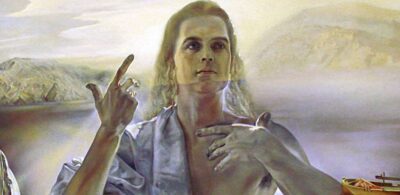Andy Warhol Still Dead!
Cheim & Read Gallery is holding an exhibition of Andy Warhol’s photographs of male nudes. In part, the gallery’s press statement reads:
“Warhol made bold commentary on commercialism and post-war capitalism through the manipulated representation and recurrent repetition of his subject. By exploiting the plethora of images and advertisements associated with consumer society and the media, Warhol exposed the inevitable triviality of images or events through their constant repetition and circulation.”
The above is only partly true. While some of Warhol’s early works may have offered a mildly subversive poke at capitalism’s hyper-commercialism, overall his works celebrated such excess; this is especially so in the later half of his career. I recently reread Robert Hughes‘ 1982 critique of Andy Warhol written for The New York Review of Books. The article, titled, The Rise of Andy Warhol, compared the Pop artist to:
“Chauncey Gardiner, the hero of Jerzy Kosinski’s Being There, he came to be credited with sibylline wisdom because he was an absence, conspicuous by its presence—intangible, like a TV set whose switch nobody could find.
Disjointed public images, the Cambell’s soup cans, the Elvises and Lizzes and Marilyns, the electric chairs and car crashes, and the jerky, shapeless pornography of his movies—would stutter across the screen; would pour from it in a gratuitous flood.
But the circuitry behind it, the works, remained mysterious. ‘If you want to know all about Andy Warhol,’ he told an interviewer in those days, ‘just look at the surface of my paintings and films and me, and there I am. There’s nothing behind it.’ What had become of the belief, dear to modernism, that the power and cathartic necessity of art flowed from the unconscious, through the knotwork of dream, memory, and desire, into realized image? No trace of it; the paintings were all superficies, no symbol. Their blankness seemed eerie.”
Hughes asked: “how could otherwise informed people in the sixties and seventies imagine that the man who would end up running a gossip magazine (Interview, founded in 1969) and cranking out portraits of Sao Schlumberger (wife of the late oil magnate Piers Schlumberger) for a living was really a cultural subversive?”
Hughes reminded us that Warhol was essentially a social climber obsessed with money and fame, and by the late 1970’s this was never more evident than in the pages of Interview. Warhol had long abandoned the faux liberalism that lead him to create presidential campaign posters for the Democratic Party. He blithely embraced the Shah of Iran, who was investing millions of dollars in Western art. Hughes wrote that, “the main beneficiary of this was Warhol, who became the semi-official portraitist to the Peacock Throne. When the Interview crowd were not at the tub of caviar in the consulate like pigeons around a birdbath, they were on an Air Iran jet somewhere between Kennedy Airport and Tehran.”
Of course it all came to a screeching halt in 1979 when the Shah’s regime was overthrown by a popular revolution. For a time Warhol floundered with Jimmy Carter in the White House, as Hughes noted Carter: “gave dull parties and talked about human rights.” But when Reagan was swept into power by a landslide election, “there would be no end of parties and patrons and portraits. The wounded horseman might allot $90 million for brass bands while slashing the cultural endowments of the nation to ribbons and threads; who cared? Not Warhol, certainly, whose work never ceases to prove its merits in the only place where merit really shows, the market.”
Hughes closed his brilliant assessment of Warhol with the following prophetic words; “Great leaders, it is said, bring forth the praise of great artists. How can one doubt that Warhol was delivered by Fate to be the Rubens of this administration, to play Bernini to Reagan’s Urban VIII? On the one hand, the shrewd old movie actor, void of ideas but expert at manipulation, projected into high office by the insuperable power of mass imagery and secondhand perception. On the other, the shallow painter who understood more about the mechanisms of celebrity than any of his colleagues, whose entire sense of reality was shaped, like Reagan’s sense of power, by the television tube. Each, in his way, coming on like Huck Finn; both obsessed with serving the interests of privilege. Together, they signify a new moment: the age of supply-side aesthetics.”
[ Read the full text of Hughes’ article, “The Rise of Andy Warhol.” ]


